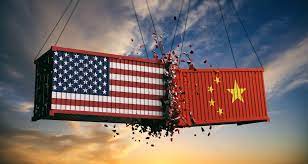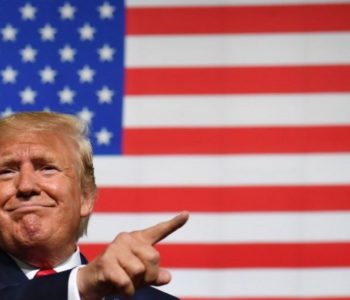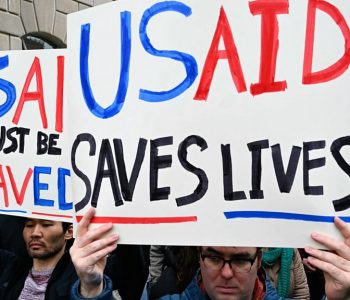In the US-China tariff war, who is likely to blink first?

KATHMANDU: As the United States and China lock horns in an escalating tariff war, the global economy braces for turbulence, and the question on everyone’s mind is: who will flinch first? With President Donald Trump imposing steep tariffs on Chinese imports and Beijing retaliating with its own levies, both economic superpowers are digging in for a prolonged standoff. Economists, policymakers, and market analysts are divided on which side has the upper hand, as the stakes rise and the fallout ripples across borders.
The latest salvo began on April 2, when the U.S. slapped a 34% tariff on Chinese goods, building on earlier duties that now total 54% on average. Trump justified the move as a response to China’s alleged failure to curb fentanyl flows into the U.S., calling it a “national emergency.” China fired back on April 4, announcing a matching 34% tariff on all U.S. imports, effective April 10, targeting key American exports like soybeans, meat, and grains. Beijing’s commerce ministry decried the U.S. actions as “blackmail,” vowing to “fight to the end” rather than capitulate. This tit-for-tat escalation marks a sharp departure from the measured responses of Trump’s first-term trade war, signaling a deeper entrenchment on both sides.
Analysts point to structural differences that could determine the outcome. The U.S., with its consumer-driven economy, relies heavily on affordable Chinese goods—$440 billion worth in 2024 alone, from iPhones to clothing. Higher tariffs are already driving up costs, with companies like Apple facing potential $350 price hikes on high-end models, according to UBS estimates. American consumers, particularly lower-income households, will feel the pinch, potentially fueling domestic pressure on Trump to ease off. Yet, Trump’s political calculus—he faces no immediate electoral threat—may allow him to weather short-term discontent, betting on a nationalist “America First” narrative to sustain support.
China, meanwhile, faces its own vulnerabilities. Its economy, already strained by a property crisis and sluggish domestic demand, could see GDP growth shaved by 2.4% in 2025 due to the tariffs, per Citigroup projections.
Exports to the U.S., a critical revenue stream, are now at risk. However, Beijing’s centralized control offers resilience: it can subsidize industries, devalue the yuan to boost competitiveness, and pivot to alternative markets like Southeast Asia and the EU. President Xi Jinping’s lack of electoral accountability further emboldens him to endure economic pain, framing resistance as a matter of national pride.
Experts are split on the tipping point. “China won’t back down unilaterally—it’d signal weakness,” says Alfredo Montufar-Helu of The Conference Board. “But the U.S. has less fiscal firepower to sustain a prolonged war.” Trump’s threats of an additional 50% tariff hike if China doesn’t relent by April 10 underscore his aggressive stance, yet rising U.S. inflation—warned of by Federal Reserve Chair Jerome Powell—could force a rethink. Conversely, China’s strategic export controls on rare earths, vital for U.S. tech and defense, give it leverage to inflict pain without blinking.
Global markets reflect the uncertainty. The S&P 500 has shed over $5 trillion since April 2, a drop not seen since 2020, while China’s stock market wobbles under domestic woes. For now, neither side shows signs of retreat. Trump’s refusal to engage Xi directly—he’s dismissed talks until Beijing complies—contrasts with Xi’s shift to “fight mode,” bolstered by plans to deepen ties with non-U.S. partners. Some speculate a face-saving deal, like increased fentanyl enforcement or symbolic concessions, could emerge, but the window is narrowing.
As the tariff war snowballs, the world watches a high-stakes game of endurance. Will Trump’s electoral bravado outlast Xi’s authoritarian resolve? Or will economic realities force one to yield? For now, the answer remains elusive, with both giants betting they can outlast the other’s pain threshold.












Facebook Comment